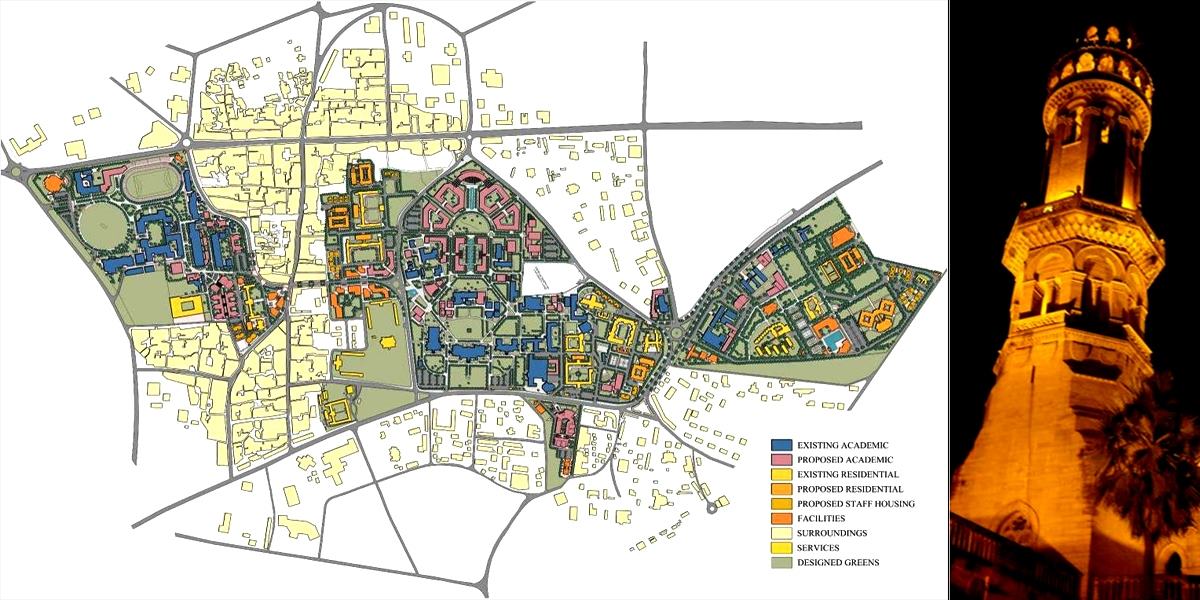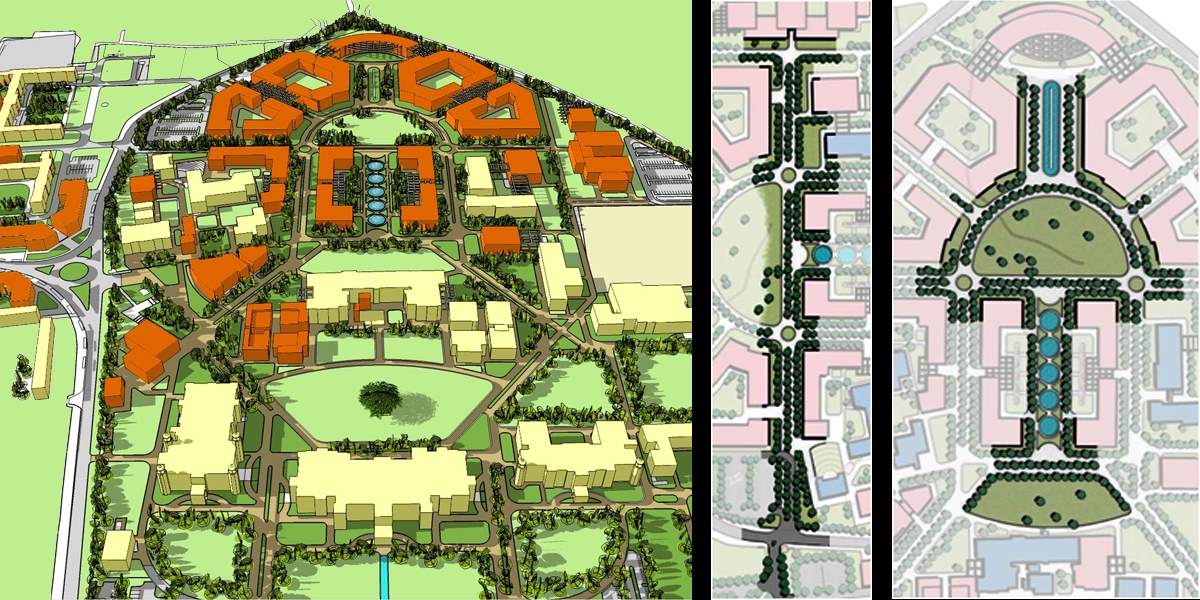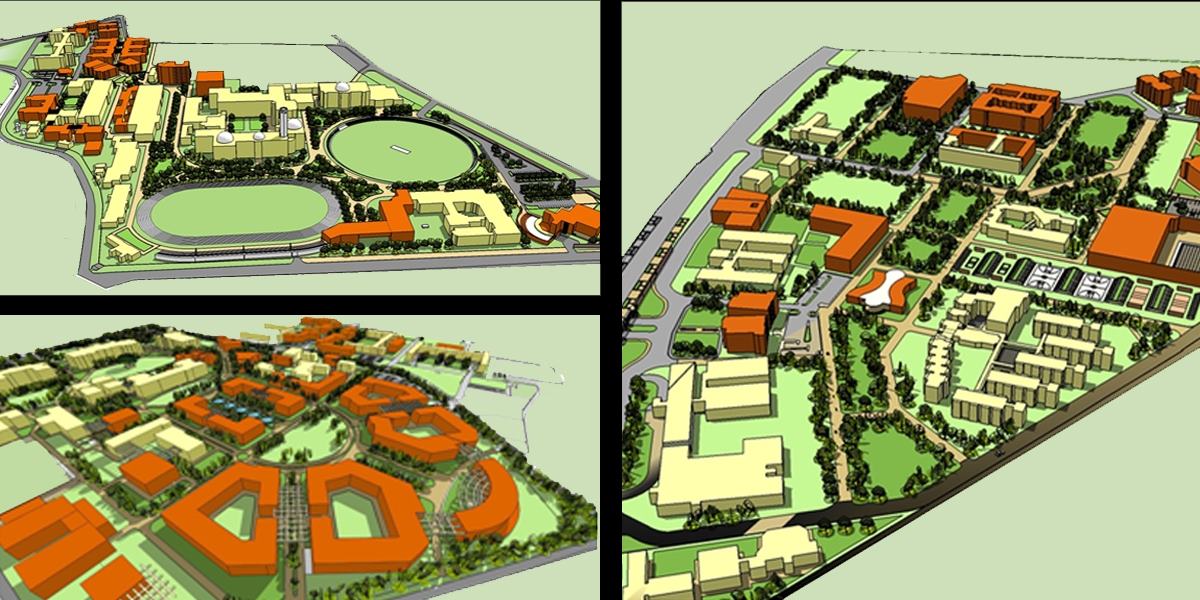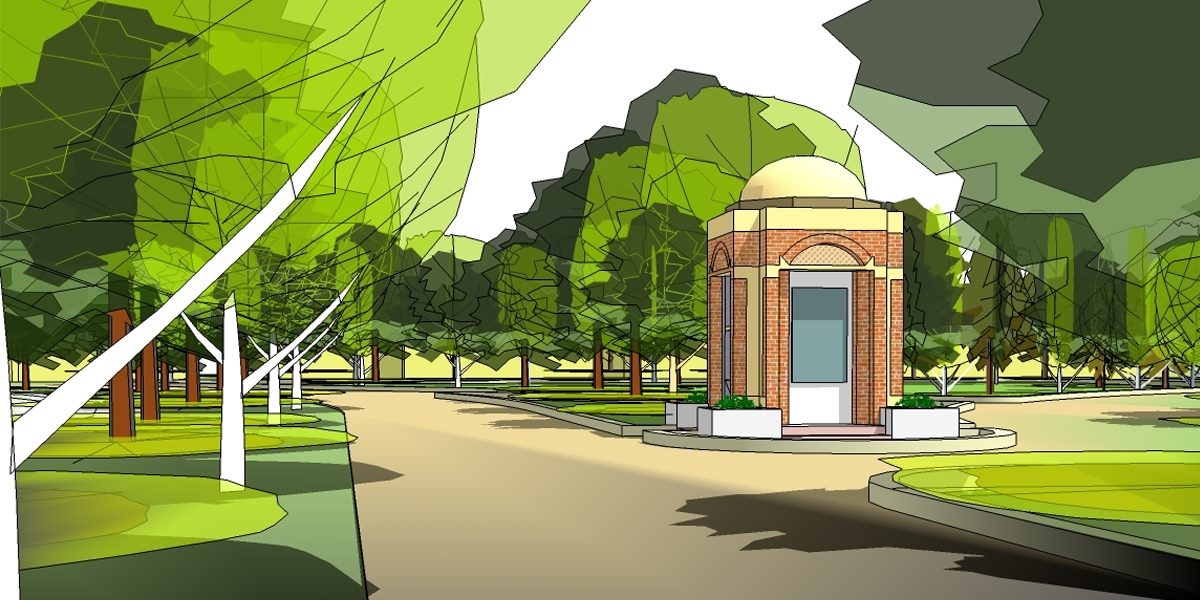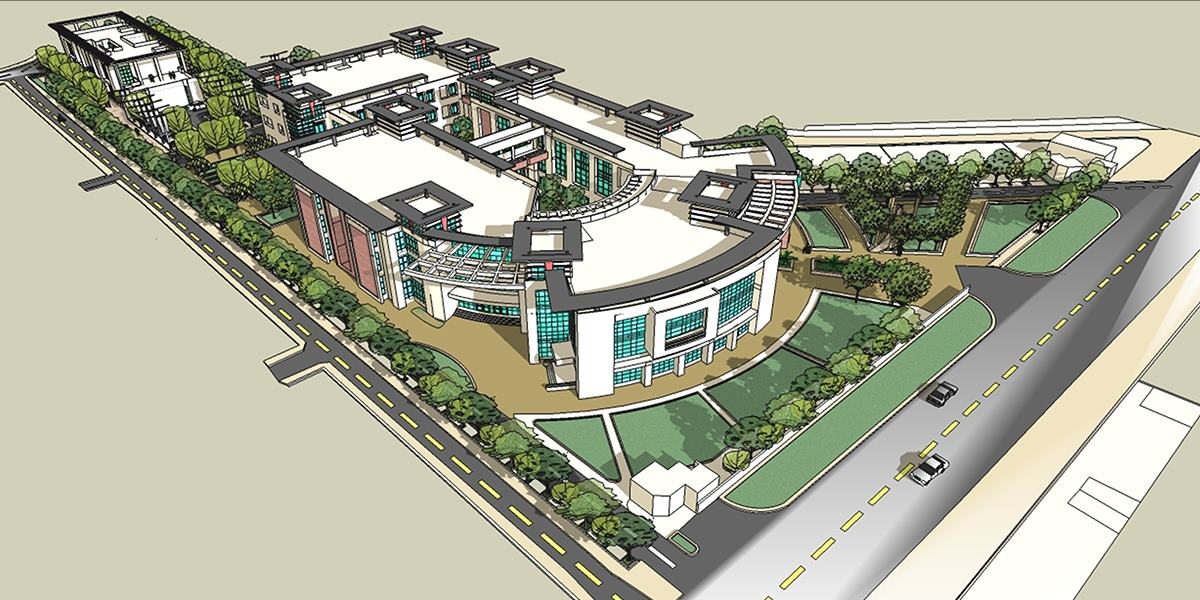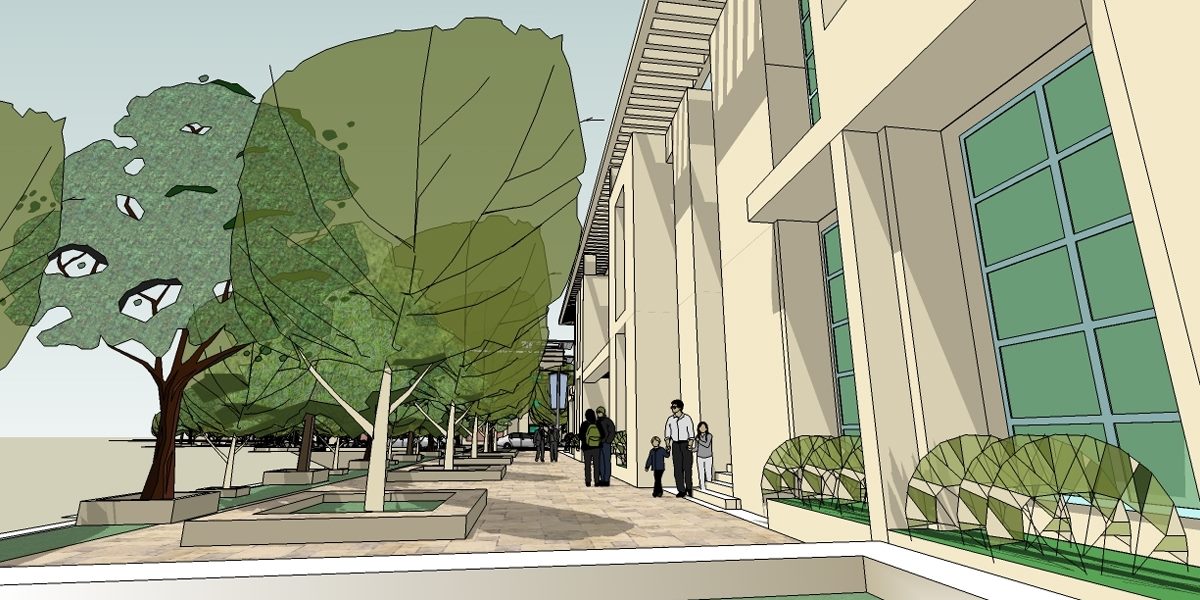University of Allahabad- Campus Redevelopment Plan, Allahabad
The University of Allahabad is a Central University having real estate assest of 346 acres dispersed in the city. The campuses grew incrementally from 1887 onwards and the main Science, Arts and Commerce/Management campuses amalgamate with the dense city fabric. Several trusts also own land parcels and buildings within the precincts of the campus. The Campus Redevelopment plan has attempted integration of all the campuses with the precincts, restructuring of internal spaces and the overall spatial structure in a pursuit of redeveloping all of the ten campuses owned by the University of Alllahabad . The revised landuse pattern specifies capacity building and efficient real estate asset management through concentration of academic activities in the campus core with additional assignable FAR for new programs complimented by expansion of academic and research facilities and expanding staff housing to other nearby properties though retaining student housing & sports within the campuses. The campuses should have a positive relationship with the precincts (the surrounding residential, commercial, and recreational areas) and the city of Allahabad.
The campus plan is a vision for the physical future of the University of Allahabad. It was prepared in a process that engaged a broad cross section of people whose lives are closely linked with the campus, including students, faculty, staff, administrators, technicians and consultants. The plan's physical form represents a remarkable consensus, among the participants, about the qualities and values central to campus life. The emphasis for the development is structured around a Strategic Framework which focuses on creating a campus environment relevant to the 21st century which meets the future demands of the University.
The significant themes for the campuses include the most highly valued asset of the campuses are its magnificent heritage buildings which are landmarks in the campus and have been retained as the focus of campus spaces and more closely integrated into the patterns of circulation and use. The views of the heritage buildings should be an integral part of the design of both indoor and outdoor spaces throughout the campus. Many different academic disciplines and activities have been bound together with a coherent and dignified system of open spaces and circulation. This is essential to promoting interdisciplinary dialogue and connecting the various parts of campus life through restructuring and by establishing appropriate land uses for various components of the campuses connected through a coherent system of pedestrian networks well connected to destinations .A Sustainable Development Framework to guide the future development of the campuses, through use of appropriate technologies and management of systems been developed.
The CMP design of buildings should contribute to the coherence of the campus in form, typology, scale and expression. The real estate value of the campuses should not be wasted with inefficient buildings, adhoc constructions and additions, temporary structures, or surface parking. The available resources are to be optimally and efficiently utilized through structured development and allocation of Ground Coverage and FAR. The emphasis of the Master plan is to renew the basic infrastructure of campuses to include all campus services, roads, pathways, parking areas and landscape. The development is proposed as the Master Plan guidelines with a ground coverage of an average of 30% and the floor area ratio of 1.
The Comprehensive Master Plan (CMP) attempts to retain the existing typology with internal spaces created as courtyards and more intimate spaces as part of Academic Departments. The Plan proposes structured and designed parcels of land created through integration of movement systems and open spaces. The footprint has been developed to create a well defined spatial structure in a manner that retains and responds to the existing typology with internal spaces created as courtyards and more intimate spaces as part of Academic Departments.. The challenge for the Campus Plan is to support the University in realizing those qualitative human goals which have universal appeal.
A system of peripheral road network is proposed in the Master Plan with the parking lots and the central areas has been pedestrianized and have been kept free from any vehicular movement. The Master Plan proposal has retained the green character of the campuses with 40% of the campus open areas have been developed as designed campus open spaces. The hierarchy of open spaces has been created in a manner to scale large public spaces and small courtyard spaces within the cluster of buildings. The structure plan has attempted to visually and physically connect these spaces to generate variety of experiences for the user each having a specified treatment of hard and soft landscape. The streets constitute a very significant part of this network which have been developed as boulevard streets with appropriate selection of trees and their species.
The development parcels were created after identifying the potential of development for each landuse and by restructuring of open and built up spaces. The building zones have been defined by regulating the circulation pattern and each parcel has been completely developed which integrates itself with the larger whole of the campuses in a manner which supports phased construction specified through the master plan implementation strategies. Therefore, the Campus Plan attempts to establish the public and private realm and a pattern of common open space that can serve as a framework within which individual building projects can be developed. The regulating lines that define the public spaces are required be respected as part of the Development Controls. The buildings have to be conceived as a means of creating public spaces as well as containers for academic functions and in this way each building will contribute towards realizing a common vision. This Plan builds on the efforts and vision of distinguished academicians, administrators and alumni whose vision and concepts which have been integrated into this plan and which are key to its form.
-
Category: Campus Planning
- Client-University of Allahabad, Allahabad, Uttar Pradesh
- Site Area – 346 acres
- Design Team: AmitHajela, Joy Sinha,Arpan Sapre, Dipanshu Biswas, Nidhi Aggarwal, Shashank Jain,Munish Suman ,Himanshu Lal
- Completion – Part Completed
